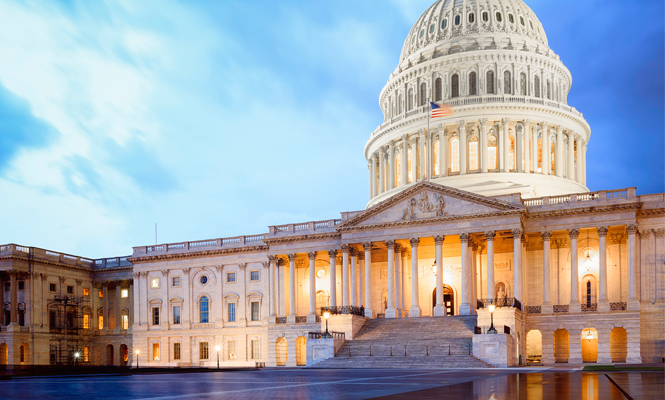 Junkie. Stoner. Crackhead. We have all heard these terms used to describe individuals who struggle with drug addiction. These terms are dismissive and disdainful; they reflect a moral judgment that is a relic of a bygone era when our understanding of addiction was limited, when many thought that addiction was some sort of moral failing and should be a source of shame. We need to change the national discussion. Put simply, individuals with substance use disorders are our patients who need treatment.
Junkie. Stoner. Crackhead. We have all heard these terms used to describe individuals who struggle with drug addiction. These terms are dismissive and disdainful; they reflect a moral judgment that is a relic of a bygone era when our understanding of addiction was limited, when many thought that addiction was some sort of moral failing and should be a source of shame. We need to change the national discussion. Put simply, individuals with substance use disorders are our patients who need treatment.
Scientific progress has helped us understand that addiction — also referred to as substance use disorder — is a chronic disease of the brain. It is a disease that can be treated, and treated successfully. No one chooses to develop this disease. Instead, a combination of genetic predisposition and environmental stimulus — analogous to other chronic diseases like diabetes and hypertension — can result in physical changes to the brain’s circuitry, which lead to tolerance, cravings and the characteristic compulsive and destructive behaviors of addiction that are such a large public health burden for our nation.
Consider that every day, 44 Americans die as a result of prescription opioid overdose, and the rate of heroin-related overdose deaths has nearly quadrupled since 2002. In addition to these tragic figures, the nation is seeing an increase in opioid-related pediatric exposures and poisonings. There has been a distressing rise in neonatal abstinence syndrome as a result of women being exposed to opioids during pregnancy. Misuse by older adults has also become an increasing concern. The rate of opioid-related hospital admissions has increased significantly over the last two decades across all age cohorts. Because of higher rates of substance use disorders in the current “baby boomer” cohort, illicit and non-medical drug use among older adults is expected to increase in the future. The bottom line is that physicians must lead the nation in changing the tide of this epidemic.
Recognizing the urgency and serious impact of this issue, organized neurosurgery appointed Jennifer A. Sweet, MD, to serve on AMA’s Task Force to Reduce Opioid Abuse on behalf of the AANS/CNS Neurosurgical Pain Section. Dr. Sweet is an assistant professor of neurosurgery at the Case Western Research University School of Medicine and a neurosurgeon at the University Hospitals in Cleveland. The AMA Opioid Task Force aims to ensure that America’s physicians, patients and policymakers take action in three ways:
First, we must change the conversation about what it means to have a substance use disorder and increase access to evidence-based treatments. This means putting an end to stigma, increasing access to medication-assisted treatment (MAT) for opioid use disorder and supporting the expanded use of naloxone — a life-saving medication that can reverse the effects of an opioid-related overdose. People with substance use disorder deserve to be treated like any other patient with a medical disease, and physicians are helping the nation understand how to do this. That is one reason the task force encourages increased education and training for MAT.
Second, we encourage physicians, dentists and other prescribers of controlled substances to register for and use prescription drug monitoring programs (PDMP) — as one tool to identify when a patient may need counseling and treatment for a substance use disorder. The trend among policymakers has been to use PDMPs to identify “doctor shoppers”. This, by itself, is important, but the real work is to understand why a patient is seeking medication from multiple prescribers or dispensers — and to offer a pathway for treatment and recovery. The information in PDMPs can play a helpful role in identifying patients in need of help.
Third, consider that we must do a better job with prevention. This includes intervening early with teens who initiate alcohol and/or marijuana as well as efforts to encourage safe storage and disposal. Unused medications increase the risk of non-medical use by adolescents who live in the home or by their friends. Unused medication also can be ingested by young children who are curious about what is inside the pill container. Implementing campaigns to educate the public on the importance of storing opioid medications locked and out of the reach of children and properly disposing opioid medications following the end of use can encourage these safe practices.
“The AANS/CNS Neurosurgical Pain Section strongly supports the efforts of the AMA Opioid Task Force and is proud to be a part of such an important endeavor to improve awareness, safety and treatment options among prescribers and patients alike,” said Dr. Sweet.
Organized neurosurgery is committed to identifying the best practices to combat this public health crisis to help patients with substance use disorders. Stigmatizing patients helps no one. Our goal is to treat patients and help them live as fully functional members of society. There are people in recovery at every level of government, the private sector and throughout our towns and communities because treatment works.
For more information on this or other health policy issues, please contact Katie O. Orrico, director of the AANS/CNS Washington Office at [email protected].








